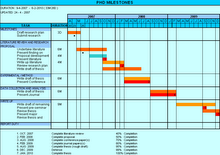ABSTRACT
- Address Target Tracking problem from the measurements made on a passive sonars activated by an active sonars (multistatic networks)
- recalls on principles of classic tracking approaches in the specific context of distributed sensors measuring range, doppler, and azimuth
- Include improvements on simultaneous tracking of a target and calibration of the sensor field
- Introduce improvement on 'recently introduced approach in target tracking' and target motion analysis which is based on a non-deterministic modelisation of the target evolution.
- Method based on Hidden Markov Modelling leads to multiple and maneuvering target tracking with few Hypotheses
- The increase in level of difficulties in detection and localisation from basic sensor due to low level of submarine radiated noise, develop interest in distributed sonar networks.
- Network consist of active sonar acting as a transmitter/receiver, and N passive sensors acting as receiver
- Sensors and targets assume to be at the same plane
- Targets are characterised by position and speed in Cartesian coordinates
- X(t) = (x(t),y(t),vx(t),vy(t))
- Sensor positions are known Xs = ( (xs1,ys1), ... , (xsN,ysN)
- False alarm assumed uniform
- Measurements carried in discrete time: a signal emitted by the active sensor will give rise to detection on the passive sensor after it has impinged the targets.
- The range, doppler, or azimuth measurements corresponding to a detection on sensor are extracted. (equations given)
- Come from a classic data association and tracking method and based on 2 steps
- Extracting and Data Association
- Extracting the measurement corresponding to each single target received from the sensors. Usually Extraction perform by track formation at the sensor level. (Based on the block diagram of track extraction, I presume they use a centralized fusion techniques)
- Track to track association where tracks from different sensors corresponding to the same targets have to be associated.
- often perform manually by an operator. However at this point automatic algorithms based on Generalized Likelihood Ratio Test have been developed and validated
- Target Parameter Estimate
- M = M ( X(t), Xs ) + B where
- M is a global vector of measure corresponding to the same target
- M ( X(t), Xs ) composed of measurements at the various time instant computed according the range, doppler, or azimuth equations.
- B is a zero mean Gaussian noise vector of known covariance ∑B.
- Assuming target motion model in known (in most cases rectilinear unaccelerated), the target characteristic are next derived from the measurement vector M with the help of maximum likelihood estimators (MLE)
- MLE are based on the identification of the target characteristic which minimize a least square criterion on the measurements. In this case is as follow
- J = [M-M(X(t),Xs),Xs]T∙∑B∙[M-M(X(t),Xs)] + [Xs-Xap]T∙∑ap∙[Xs-Xap]
- Xap represents supposed sensor position
- ∑ap represents the covariance of this uncertainty
- J take into account the imperfect knowledge of the sonar position, therefore calibration of the network can be perform simultaneously to the target characteristic estimation by considering Xs as an unknown and Xap as a parameter.
- Classic MLE - Gaussian Newton (GN) algorithm and EKF are extended to this case with few modification.
- Difficulties occur for EKF when the initial parameter is to be set.
- Results of measuring range and azimuth for both methods are provided.
- EKF able to track maneuvering target provided the target noise model covariance is well chosen
- GN algorithm is significantly degraded due to the fact that it is implicitly non adaptive
- Accurate calibration is performed jointly with an unbiased target motion estimation provided at least one sensor position is exactly known and azimuth measurements are made by at least one sensor.
- Classic approach has limitation on maneuvering targets
- DIAMANT ( DIscrete Association, Motion ANalysis and Tracking) differs compare to classic sonar tracking method.
- Use Hidden Markov Chain method

No comments:
Post a Comment